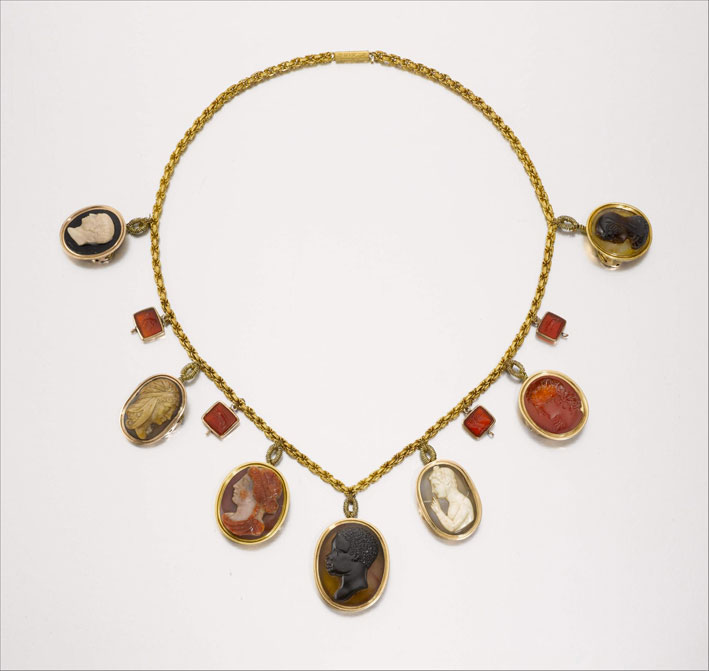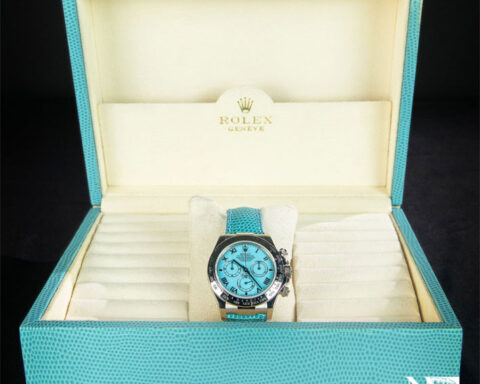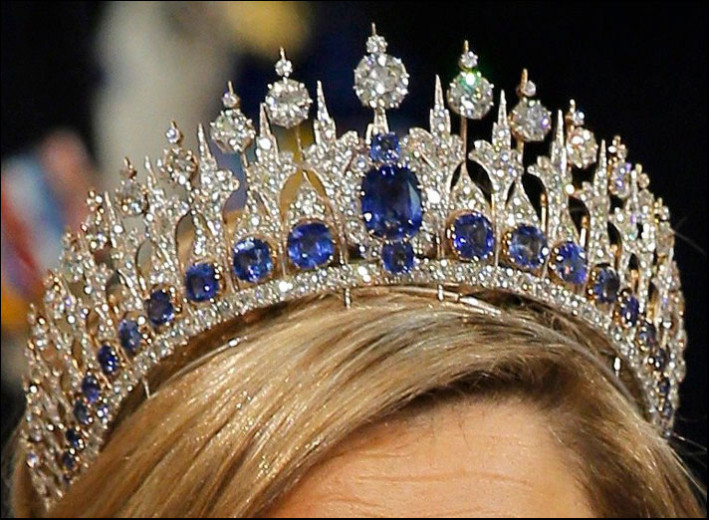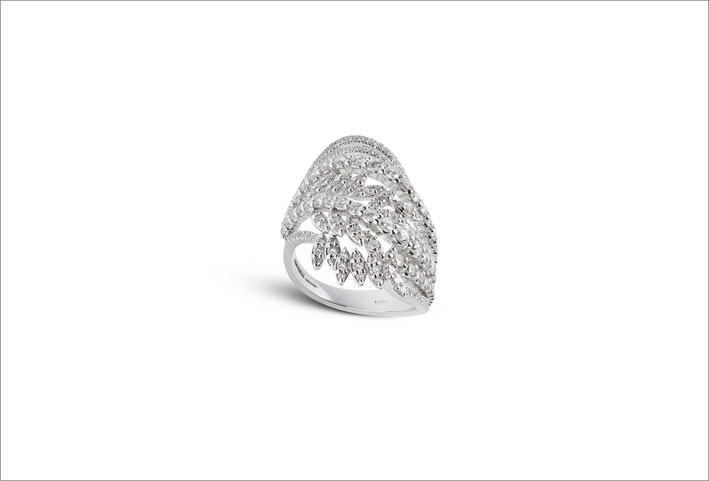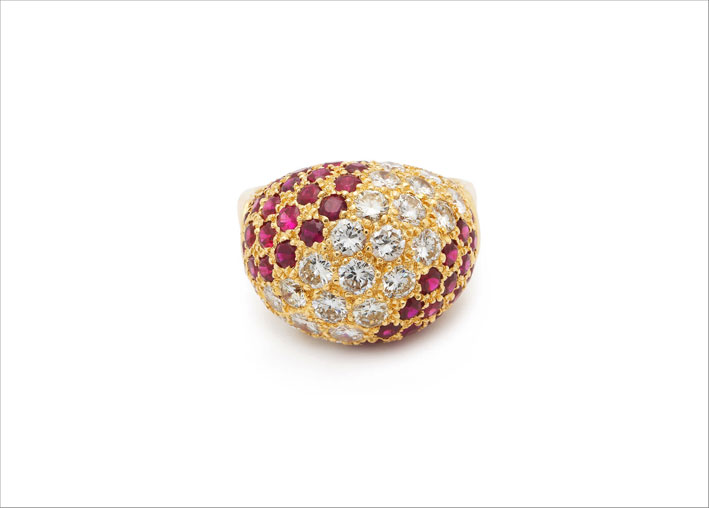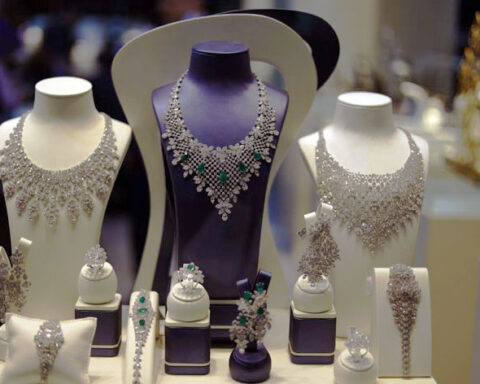2021 was the bicentenary of Napoleon Bonaparte’s death. The sale by Sotheby’s of two diadems that belonged to Joséphine de Beauharnais (1763-1814), at least according to the current reconstruction, is therefore topical. Joséphine, wife of Napoleon Bonaparte (1769-1821), was empress of France and wore these very rare diadems which, apart from their material value, constitute a historical testimony of French craftsmanship of the early nineteenth century.
The jewels were made in Paris around 1808, in the neoclassical style that Napoleon liked, who was looking for historical and cultural references in ancient Rome. Joséphine, in perfect harmony, used clothing and jewelry to evoke the ideals of the ancient world and linking it with the current Empire to increase the prestige of her husband’s regime. Just like an influencer, she is. The empress was a lover of jewelry. In just six years, Joséphine has spent an impressive sum of more than 25 million francs on jewelry and clothing, far exceeding the allowance she had been awarded.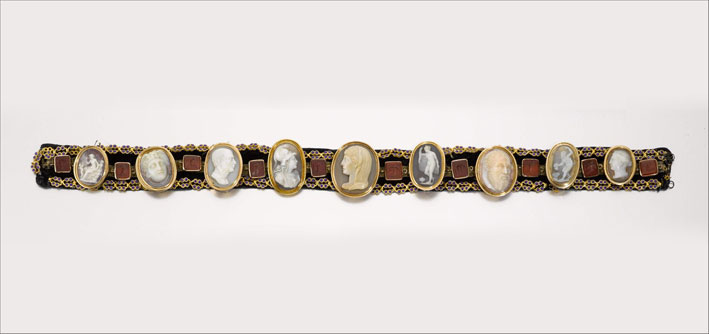
These majestic jewels set with cameos and carvings certainly evoke the style of the great Empress Joséphine – her rank as wife of Napoleon Bonaparte, her impeccable taste and her interest in the classical world. Empress Joséphine was much more than just a collector of antiques. Being the first to incorporate these cameos and carvings into her dress, wearing them side by side with pearls and diamonds, she created a completely new fashion that swept Paris and the world, based on neoclassical forms. The jewels offered here demonstrate the finest and most delicate work of the best French workshops and, today, there are hardly any comparable pieces in the world. As fashions changed, the jewels were broken down and reshaped, making their survival truly exceptional.
Kristian Spofforth, Head of Sotheby’s Jewels Department in London

The two diadems are part of two sets. They are set with precious stones engraved with classic heads, many of which are perhaps ancient: it was believed that they bestow on the wearer virtues such as heroism, fidelity and love. The jewels are part of a private collection in the UK, where they have remained for at least 150 years, and both are still contained in their original leather boxes. They will be offered with estimates of 200,000-300,000 and 100,000-200,000 pounds in the sale of Sotheby’s London Treasures, scheduled for 7 December.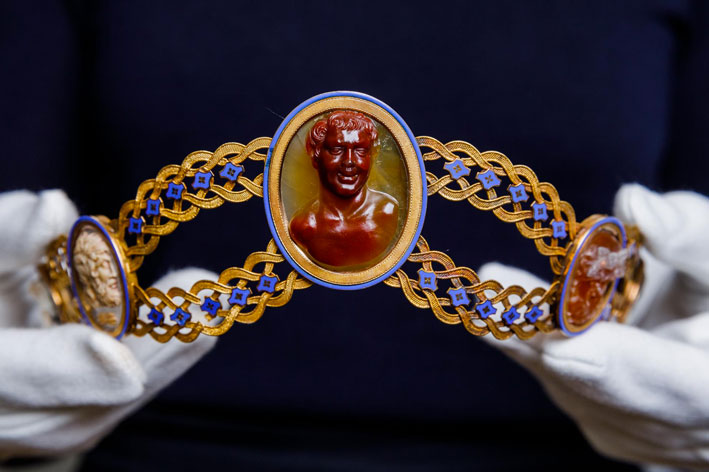
The sets will first be exhibited from 2 to 9 November at the Mandarin Oriental, Geneva, together with the highlights of Sotheby’s sales of Magnificent Jewels. A similar set is kept in the collection of the Swedish royal family, inherited from Joséphine’s son, Eugène Rose de Beauharnais, Duke of Leuchtenberg. Her daughter, Joséphine of Leuchtenberg, brought numerous jewels to the Swedish royal family when she married the future King Oscar I in 1823.